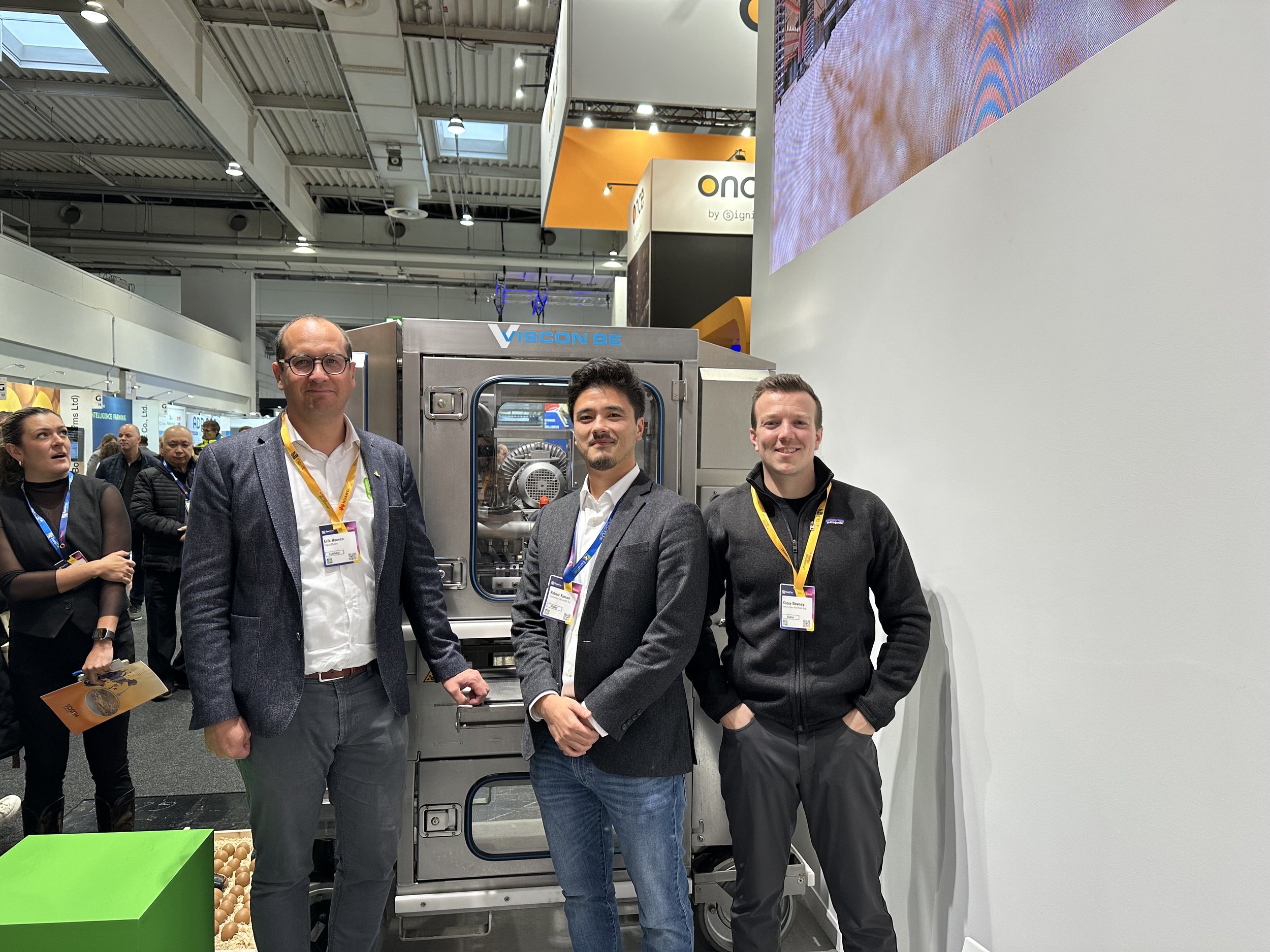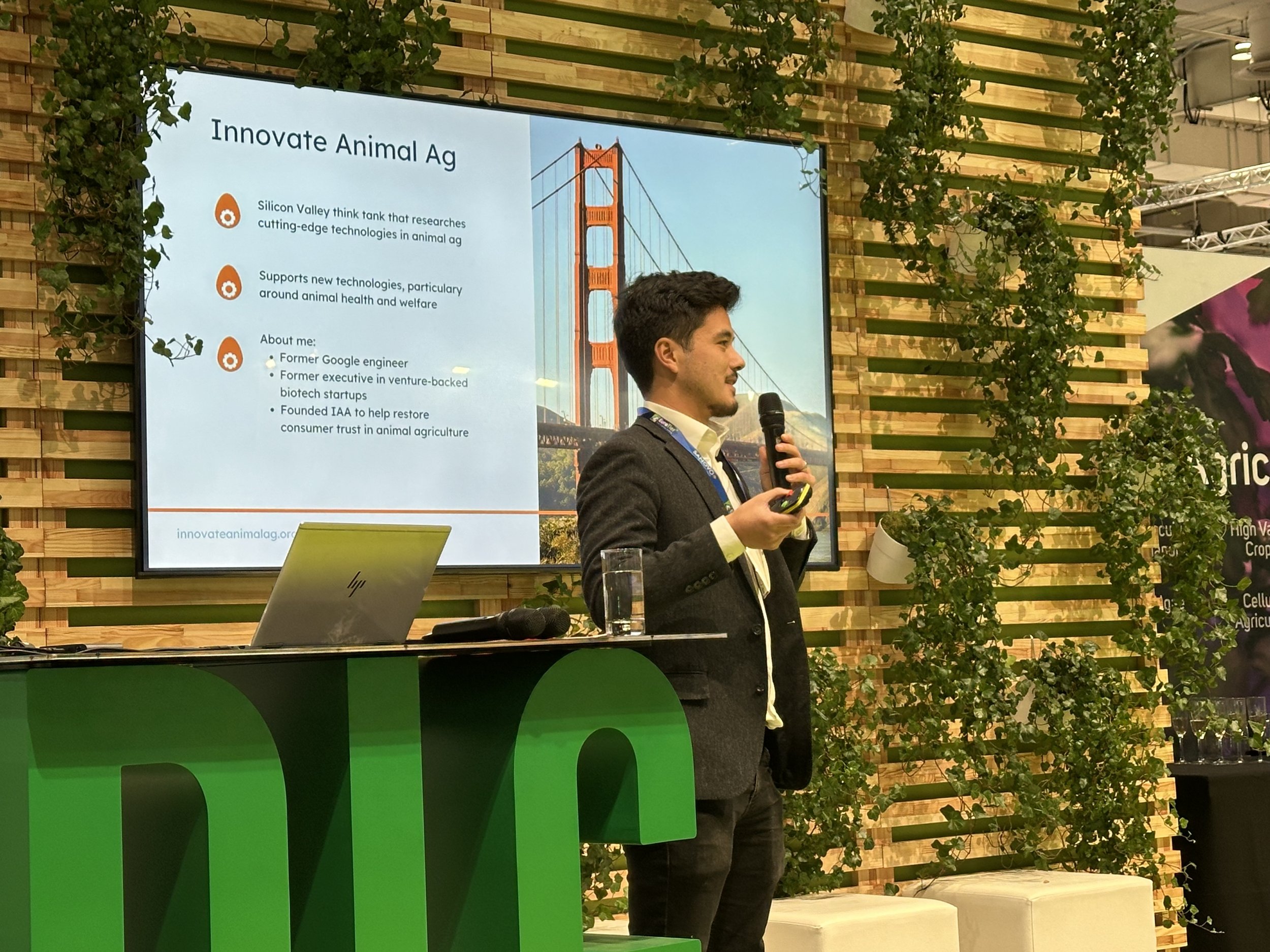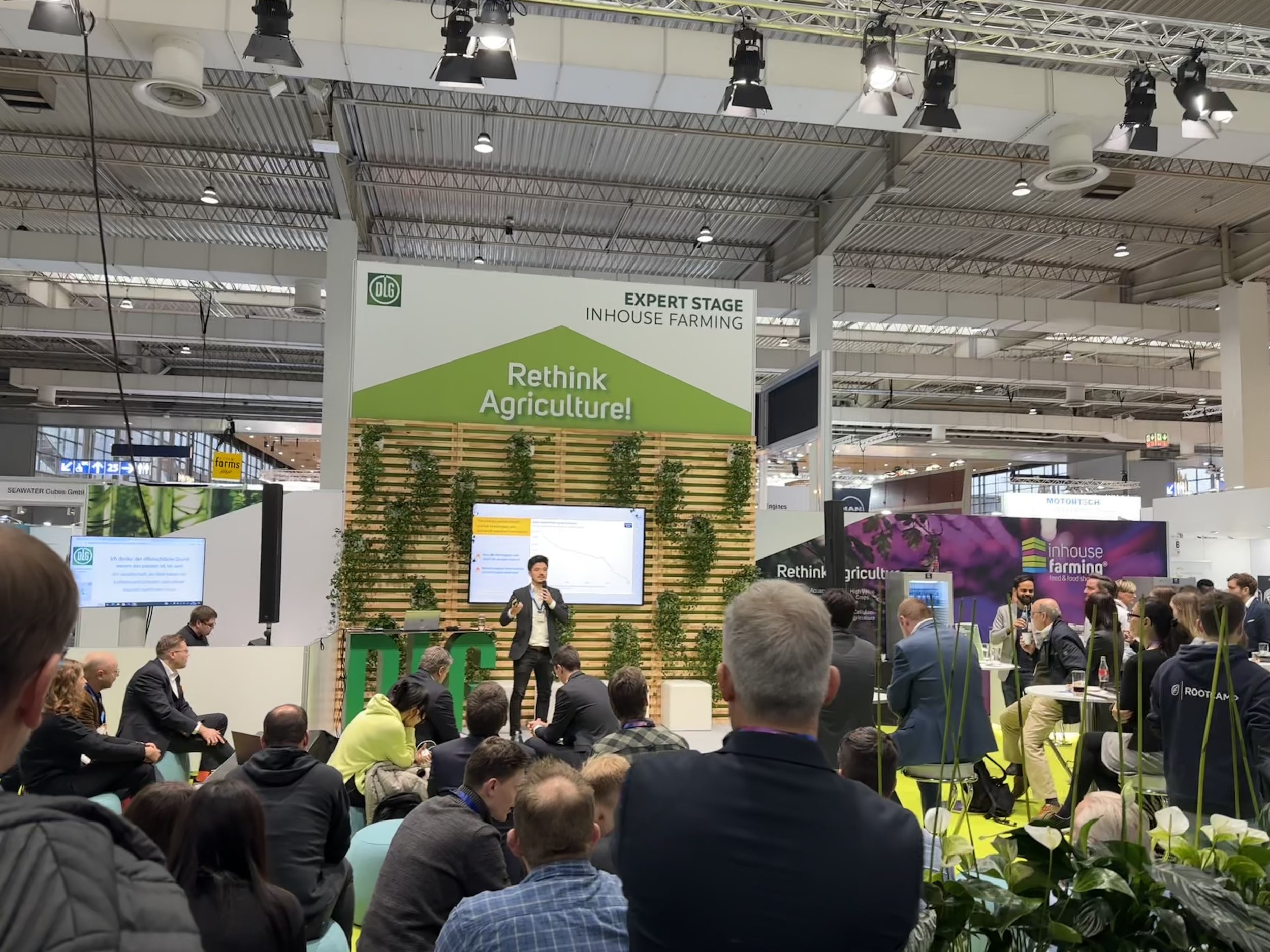Europe Travel Journal: What We Learned from Seeing In-Ovo Sexing in Action







Last month, Innovate Animal Ag took a two-week trip to northern Europe to visit the birthplace of in-ovo sexing technology. We want to extend our gratitude to everyone we met that took time out of their busy schedules to help us gain a deeper understanding and appreciation of the amazing technological innovations coming out of northern Europe.
We spent the first week visiting hatcheries and farms in The Netherlands, Belgium, and northern Germany. During this tour, we saw operational in-ovo sexing machines from In Ovo, Respeggt, Orbem, and AAT; witnessed an on-farm hatch of new chicks from Nestborn; and visited the headquarters of HatchTech to learn about some ways to improve hatchability in the broiler sector.
During the second week, we attended Eurotier 2024, one of the largest and most important animal agriculture conferences in the world. At this conference, our CEO Robert Yaman gave a keynote presentation titled “Beyond Commodities: Innovating for Profit and Purpose in Animal Agriculture.” The talk focused on how innovation in animal agriculture is particularly difficult due to structural factors in the industry, but startups and innovators can overcome these challenges by aligning their innovation with broader societal values. He compared the tailwinds of technologies like solar energy with the headwinds of technologies like driverless vehicles, arguing that a major determining factor for the success of a technological innovation is how the innovation is viewed by broader society. Robert also argued that animal health and welfare is the most salient and important “social good” component to animal products, which is why it’s Innovate Animal Ag’s focus.
This thesis was perfectly illustrated in the startup pitch competition that immediately followed the talk, where Omegga, an up and coming in-ovo sexing company, beat out 20 other agtech startups for a cash prize. In-ovo sexing solves an important and easily understandable problem in animal agriculture, garnering support from governments, media, NGOs, and other important institutions (like RootCamp, the one running the pitch competition!). This kind of support is crucial for innovating in a difficult industry like animal agriculture.
One of the most enlightening parts of the trip was seeing all of the in-ovo sexing machines in action. Since our staff is based in the US, we’ve had limited opportunities to do this before. A few key learnings from this experience:
Operational efficiencies at hatcheries with in-ovo sexing machines have been as important as improvements in the in-ovo sexing technology itself. In-ovo sexing machines do not exist in a vacuum. They are brought into an operation that has refined its practices over decades, and they fundamentally restructure its workflow. It’s easy to focus on the key differences between the major technologies or the improvements with the latest versions of machines. But what matters even more is how accurate and fast the machine is in the field, how strong the engineering and automation around the machine are, how easy the machine is to operate, the machine’s labor and space footprint, and how responsive the provider is to addressing problems that inevitably arise. In a competitive market, just having the best technology in the abstract isn’t enough. You also need flawless execution.
Fitting in-ovo sexing into existing hatcheries is significantly more difficult than designing a new hatchery with in-ovo sexing in mind. When the commercialization of in-ovo sexing began, hatcheries did not have the flexibility to redesign their facilities around this new step in their process. Instead, they often re-allocated rooms that were previously meant for some other purpose, and even removed equipment like setting incubators whose capacity was no longer needed. Hatcheries were able to make this work, but changing the process in an existing facility is always suboptimal and inefficient. Additionally, retrofitted facilities generally have higher capital costs than purpose-built facilities.
This is a challenge that resolves on its own over time. Now, if a new hatchery is built, it will be designed with in-ovo sexing in mind at the outset. This will help lower the cost and complexity of in-ovo sexing over the long-term. We already saw this principle in action at the Pluriton Hatchery in Bladel. At this distribution center, eggs are set and in-ovo sexed then shipped to other facilities for hatching. The facility was designed around this process, and its intentional design clearly benefited its process flow. Over time, it’s likely we’ll see more distribution centers like this as the industry transitions to the Hatchery of the Future.
The future is bright for in-ovo sexing. Cheap, reliable, and fast in-ovo sexing has long been the aspiration of the global egg industry. Such technology has the ability to meet consumer demands and increase efficiencies at the hatchery. In Europe, the market-leading machines are clearly hitting this bar, demonstrating that in-ovo sexing is possible and economical at scale. We also learned more about the innovative plans that leading in-ovo sexing companies have developed to advance their machines to the next level. While the exact path forward is not yet determined, we left Europe even more excited about the future of in-ovo sexing. For one thing, in-ovo sexing has now made it to our home country, after the historic first hatch of in-ovo sexed chicks on US soil earlier this month. In the coming years, we expect in-ovo sexing to become the global norm, fostering a more efficient egg industry that’s better for consumers, farmers, and animals alike.
